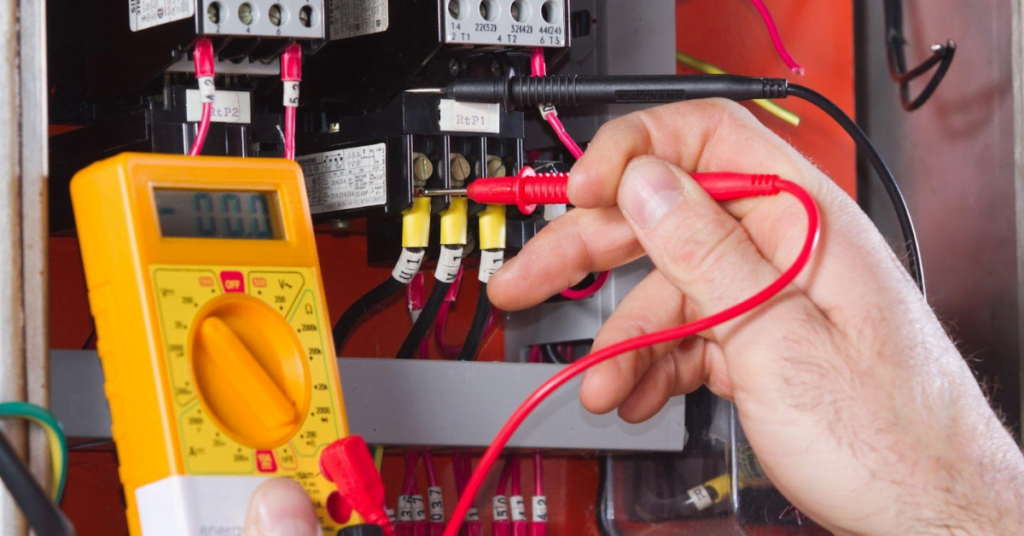When it comes to your home’s electrical system, the term “electrical home run” is often used to describe a crucial component. But what exactly does it mean, and can you take on the task of DIY-ing an electrical home run?
In this article, we will delve into the world of this type of electrical system. We’ll explain their importance and discuss whether it’s a project suitable for DIY enthusiasts. We’ll also touch on the importance of safety and the role of a qualified electrician.
So, if you’ve ever wondered about tackling this electrical system in your home, keep reading to find out more.
Understanding Electrical Home Runs
An electrical home run refers to the main electrical circuit that carries power from your electrical panel to various outlets, switches, and fixtures throughout your home. Think of it as the central highway for electricity within your house.
This circuit typically consists of a series of wires and cables. It’s responsible for distributing electricity to all the different parts of your home.
This electrical wiring is a critical component of your electrical system. If it’s not installed or maintained, you can run into a host of electrical problems, from flickering lights to circuit overloads. That’s why ensuring your home wiring is in good shape is essential for the safety and functionality of your home.
DIY vs. Professional Installation
Now that we have a better understanding of what an electrical home run is, let’s tackle the question: Can you DIY an electrical home run? The short answer is, it’s not recommended for most homeowners.
Working on electrical systems can be highly dangerous if you don’t have the necessary knowledge and experience. One wrong move can lead to electrical shocks, fires, or even fatalities.
Electrical work must follow local building codes and safety regulations. This can be complex and confusing for those without proper training.
However, there are some electrical projects that adventurous DIYers can take on with caution. For instance, replacing a faulty electrical outlet or light switch can often be done safely by following step-by-step instructions. But when it comes to your home’s main electrical home run, it’s best to leave it to the professionals.
Tasks You Can Safely DIY
While tackling an entire electrical home run might not be advisable for most homeowners, there are some electricity problems that you can safely handle on your own. These include:
1. Replacing Electrical Outlets and Switches
As long as you turn off the power at the breaker panel and follow proper safety precautions, replacing outlets and switches is a manageable DIY task.
2. Installing Light Fixtures
Swapping out light fixtures is another job you can handle, as long as you understand the wiring and follow the manufacturer’s instructions.
3. Installing Ceiling Fans
Installing ceiling fans can be a DIY project if you’re comfortable with electrical work. You should also have a clear understanding of the wiring involved.
Prioritizing Safety in All Ways
Safety should always be the top priority when it comes to electrical work. If you’re considering any DIY electrical project, it’s crucial to follow these safety guidelines:
1. Turn Off the Power
Before working on any electrical component, turn off the power to the circuit at the electrical panel. Use a voltage tester to confirm that there is no electricity flowing to the area you’re working on.
2. Use the Right Tools and Materials
Ensure that you have the appropriate tools and materials for the job. Low-quality or damaged tools can increase the risk of accidents.
3. Wear Safety Gear
Protective gear, such as gloves and safety goggles, can shield you from potential hazards.
4. Educate Yourself
If you’re attempting a DIY electrical project, thoroughly research the process, and follow step-by-step instructions. If you’re unsure at any point, consult a professional.
5. Know When to Call an Electrician
Don’t hesitate to call a qualified electrician if you encounter any issues that are beyond your level of expertise. It’s better to be safe than sorry.
The Role of a Qualified Electrician
When it comes to troubleshooting electrical systems, hiring a qualified electrician is the best course of action. Here are some reasons why:
1. Expertise
Electricians undergo rigorous training and licensing requirements. This is to ensure they have the knowledge and skills needed to work on electrical systems safely and effectively.
2. Compliance
Electricians are well-versed in local building codes and safety regulations. This ensures that all work is up to code and compliant with the law.
3. Safety
Professionals prioritize safety and have the necessary equipment and experience to minimize risks associated with electrical work.
4. Efficiency
Electricians can complete projects more quickly and efficiently than most DIY enthusiasts, minimizing disruption to your daily life.
5. Peace of Mind
Hiring an electrician provides peace of mind, knowing that your electrical home run and other electrical systems are in capable hands.
Related Articles,
A Concise Guide to Running an Eco-Friendlier Household
Top Family Activities at Home for Autumn
An Alternative Power Source
In the world of electrical systems, the topic of alternative power sources is gaining traction. One such alternative is the use of battery storage systems like the battery El Cajon. These systems allow homeowners to store excess electricity, typically generated from renewable sources like solar panels, for use during peak demand or when the grid is down.
Battery El Cajon is an example of such a system, designed to provide homeowners in the El Cajon region with a reliable backup power source. These batteries are becoming increasingly popular due to their ability to reduce reliance on the grid and provide energy security during power outages. Consulting with a professional electrician who specializes in renewable energy systems is crucial if you’re interested in integrating battery storage into your home.
Learning About DIYing an Electrical Home Run
In conclusion, DIYing an electrical home run is within the realm of possibility for anyone comfortable completing basic electrical work. With safety as a priority, it is important to follow all safety and building codes. Before beginning any work, it is wise to consult a professional electrician to answer any questions or concerns.
With careful safety measures considered, you can easily have a successful electrical project that won’t strain your budget. So, why not try it for yourself? Ensure to double-check with the professionals to ensure that you’re on the right track.
If this article has helped you in many ways, check out our other blogs on this site and learn more today!






